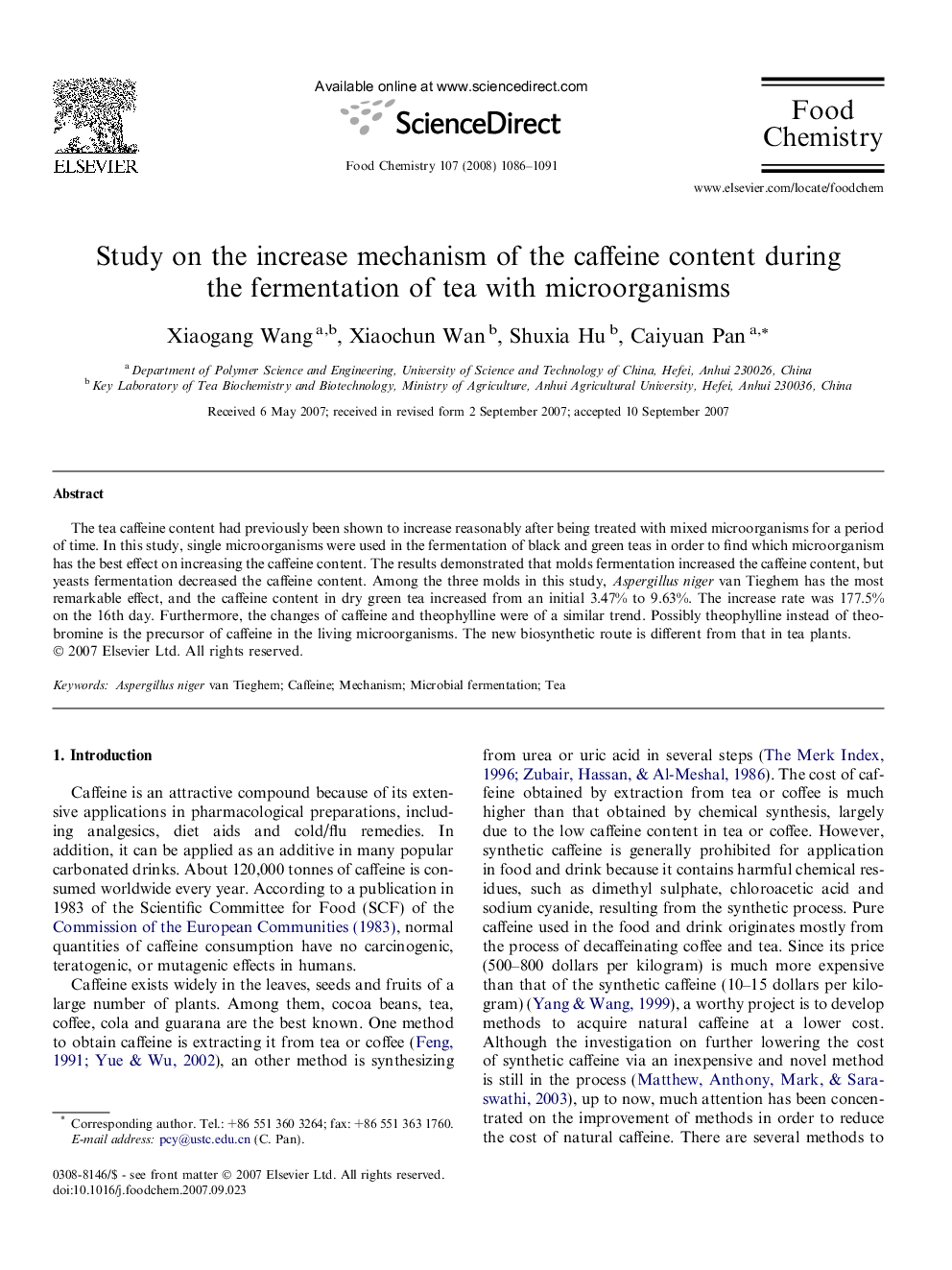| Article ID | Journal | Published Year | Pages | File Type |
|---|---|---|---|---|
| 1189036 | Food Chemistry | 2008 | 6 Pages |
The tea caffeine content had previously been shown to increase reasonably after being treated with mixed microorganisms for a period of time. In this study, single microorganisms were used in the fermentation of black and green teas in order to find which microorganism has the best effect on increasing the caffeine content. The results demonstrated that molds fermentation increased the caffeine content, but yeasts fermentation decreased the caffeine content. Among the three molds in this study, Aspergillus niger van Tieghem has the most remarkable effect, and the caffeine content in dry green tea increased from an initial 3.47% to 9.63%. The increase rate was 177.5% on the 16th day. Furthermore, the changes of caffeine and theophylline were of a similar trend. Possibly theophylline instead of theobromine is the precursor of caffeine in the living microorganisms. The new biosynthetic route is different from that in tea plants.
